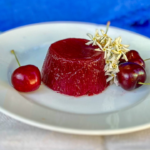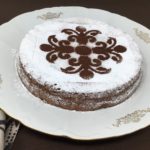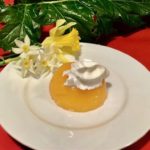VEGAN CHERRY JELLIES

Fancy a dessert that contains all the flavor of ripe cherries? If the answer is yes, then you absolutely have to try my vegan cherry jelly recipe. Forget about industrial jellies; here we only use fresh fruit pulp and agar-agar, a vegetable gelling agent, also suitable for those who have a particular diet (gluten intolerant), healthy, natural and incredibly tasty. Follow these simple steps to bring a summer concentrate to the table. A perfect vegan cherries jelly, inclusive delicacy, a recipe that can be transformed just changing the fruit with other seasonal one. The use of agar-agar forces me to use the decimal system, that is far more precise than the Imperial one.
Prep Time: 10 minutes | Sitting Time: 2 hours | Yields: it serves 4.
Ingredients:for vegan cherry jelly
- 6 G agar-agar powder
- 320 G cherry pulp, about 400 G cherries washed and deprived of stones and stems, diced
- 350 G water
- 32 G white sugar
Method:How to make vegan cherry jelly
- Combine all the ingredients in a saucepan and boil for 4 mins. Blend with an immersion blender.
- Meanwhile, lightly grease 4 small tins with vegetable oil. Pour cooled jelly into tins through a sieve. Refrigerate for 2 hours to set completely.
- Remove from fridge and use the point of a sharp small knife to carefully release the dessert from the tin along the edges. Lightly grease your serving platter with oil. Place the platter upside down on top of the tins, then swiftly flip them over so that the tins is now upside down, and (hopefully) allow the dessert to fall out onto the platter.
- Serve immediately, or refrigerate until ready to eat.
NOTES
+ 2 hrs refrigeration.
http://Agar-agar WikipediaBrief history of agar-agar








